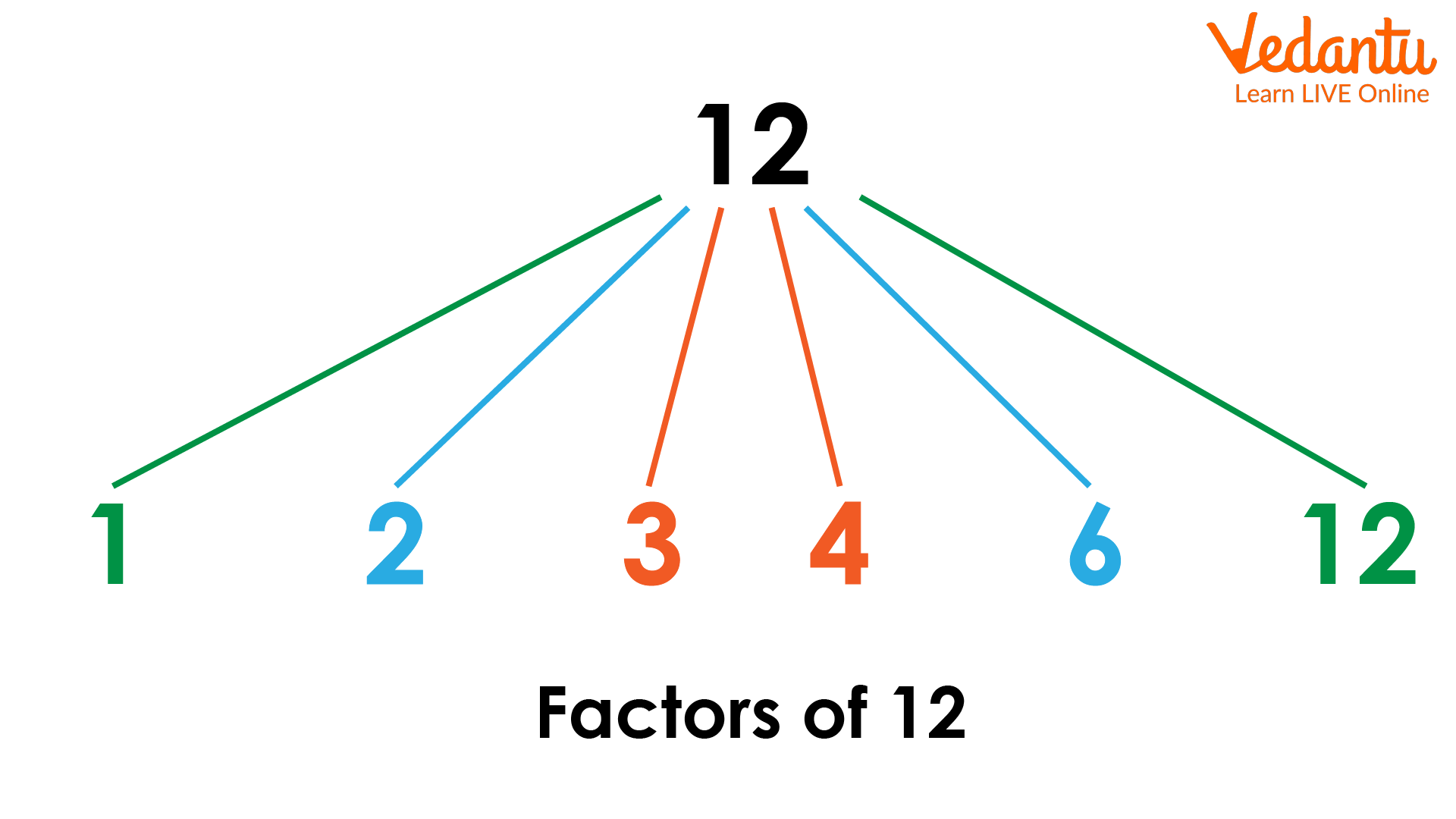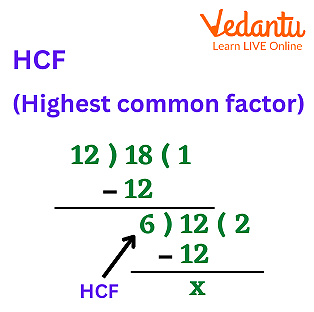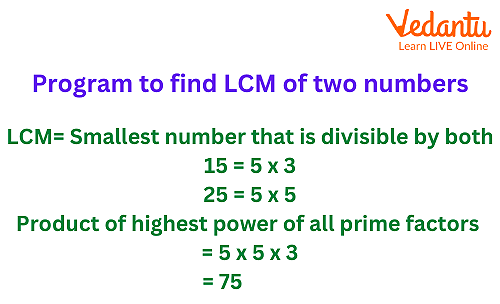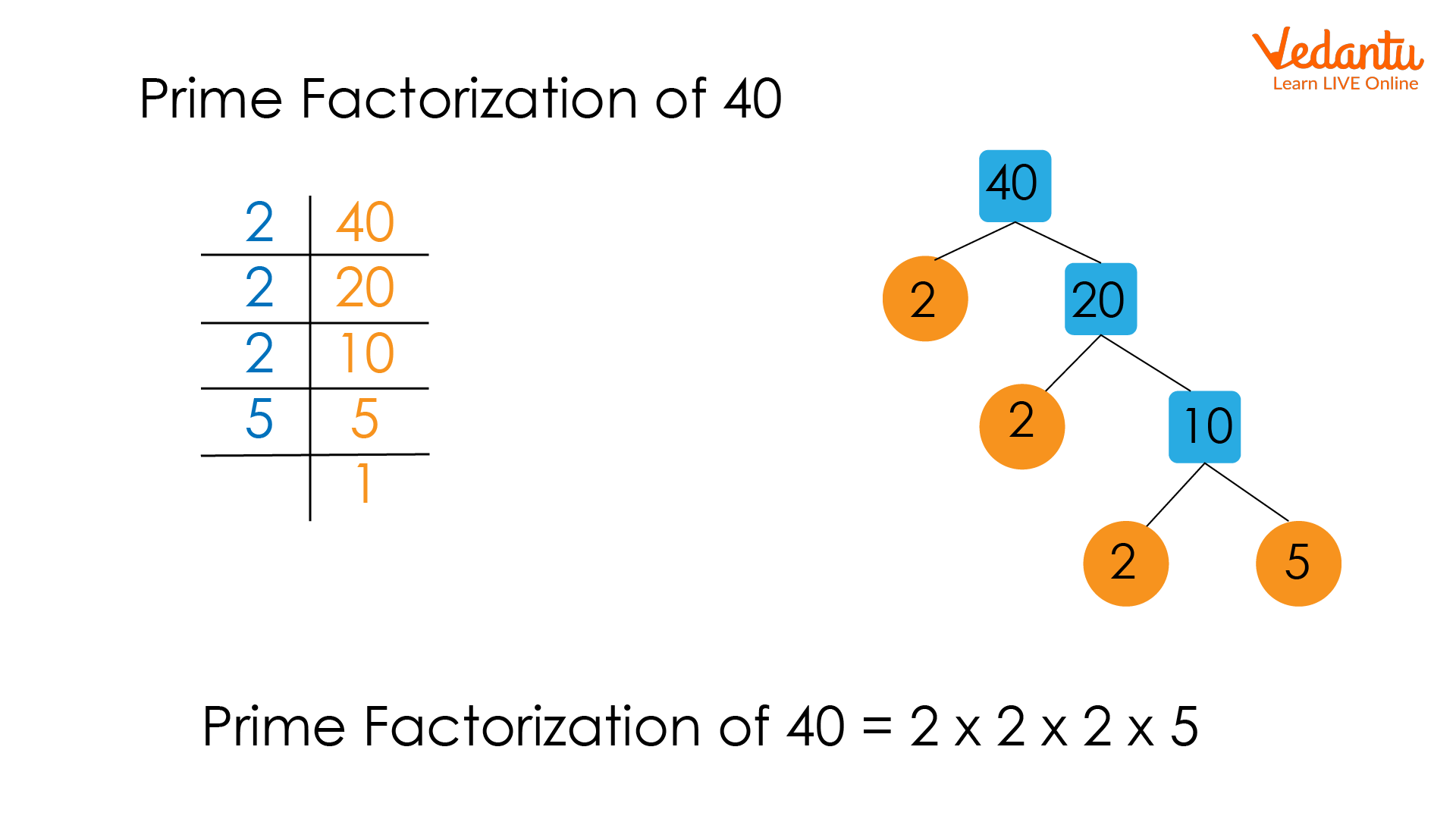




How to Identify and Use Factors in Maths Questions
There is a number which divides with another number without leaving any reminder. We can find factors from two ways: multiplication and division. A number can be multiplied with another number to give a product so these numbers are called factors.
Examples of Factors:
Let me have 10 mangoes and we have to divide that 10 mangoes between 10 people so that each person has an equal number of mangoes. So ,here \[1 \times 10 = 10\] from this example we can conclude that one is a factor of 10. Now we decide to divide 10 mangoes between five people so that each person has an equal number of mangoes so we can give two mangoes to every person. Now \[5 \times 2 = 10\]. Now again we decide to share 10 mangoes between two people. Each person has an equal number of members so we can give five mangoes to every person now \[2 \times 5 = 10\]. So the factors of 10 are 1,2,5,10. So from this example we can conclude that when a number is divided by its factor then the remainder becomes zero.

Factors of 12
Common Factors:
Common factor is a number which is a factor of two or more numbers that implies two numbers that can be divided with the same number without leaving any reminder. 1 is the common factor to all the numbers. To find a common factor of two or more Numbers, firstly we have to write down factors of every number independently and after that we have to check which factors are common in both the numbers, the factors which are common in all the numbers are common factors.
Example: found out the common factors of 12, 18, 26, 30
Factors of 12 –1,2,3,4,6,12
Factors of 18–1,2,3,6,9,18
Factors of 26 –1,2,13,26
Factors of 30–1,2,3,5,6,10,15,30
Common factors of 12, 18, 26, 30 are 1 and 2.
HCF:
HCF is called the highest common factor as its name suggests it is the highest common divisor of two or more numbers. Is also known as GCF, which is the greatest common factor. Now let’s discuss how to find HCF, so to find HCF of two or more number firstly we have to find factors of numbers separately and after that we have to find which factors are common after finding common factors we have to find which factories largest to all the numbers so the largest factor is called HCF.
Now let’s understand HCF with the help of an example. Let’s take two numbers 58 0 and 78 and find HCF.
Factors of 58 –1,2,29,58
Factors of 78 –1,2,3,6,13,26,39,78
Common factor of 58 and 78 –1,2
GCF of 58 and 78 is 2.

HCF
LCM:
It is the smallest number that is Multiple of two or more numbers. Let’s discuss LCM with the help of examples, take two numbers 3 and 5
Multiples of 3 are 3, 6, 9, 12, 15,…..
Multiples of 5 are 5,10,15,…..
Common numbers are 15,30,45,…..
The lease from all the common multiples of 3 and 5 is 15. Hence 15 is LCM of 3 and 5

LCM
Prime Factorisation:
When products of prime numbers are expressed as non prime numbers or composite numbers then this process is called prime factorisation. Now first discuss what prime numbers are: prime numbers are those numbers that only have two factors 1 and the number itself. Some prime numbers are 2,3,5,7,11,13,..so on. We can find prime factors with the help of tree method or division method. Let’s discuss some examples of prime factorisation
Prime factors of 12 –2x2x3
Prime factors of 36 –2x2x3x3

Prime Factorization
Solved Examples:
Q1. Find GCF of 28 and 34.
Solution: Factors of 28 – 1, 2, 4, 7, 14
Factors of 34–1, 2, 17, 34
Common factors of 28 and 34 –1,2
GCF of 28 and 34–2.
Q2. Find the LCM of 15 and 18
Solution:Multiples of 15 –15, 30, 45, 60, 75, 90, 105,…
Multiples of 18 –18, 36, 54, 72, 90,…..
So LCM of 15 and 18 is 90
Q3. Find the common factor 60 and 70
Solution:Factors of 60– 1,2,3,4,5,6,10,12,15,20,30,60
Factors of 70–1,2,5,7,10,35,70
Common factors of 60 and 70 are1,2,5,10
Conclusion:
In this article we learned about factors with the help of examples. We also learned about HCF, LCM , prime factorisation, and common factors. We also learn about how does Numbers are interrelated to each other. Like without finding common factors we cannot find it safe for LCM.
FAQs on Factors: Definitions, Examples & Solved Problems
1. What is a factor in mathematics?
In mathematics, a factor is a number that divides another number exactly, leaving no remainder. For example, when we multiply two numbers, say 3 and 4, we get 12. Here, 3 and 4 are the factors of 12. Every number greater than 1 has at least two factors: 1 and the number itself.
2. Can you provide some examples of factors for different numbers?
Certainly. Finding factors involves identifying all the numbers that can divide a given number without a remainder. Here are a few examples:
- The factors of 10 are 1, 2, 5, and 10.
- The factors of 24 are 1, 2, 3, 4, 6, 8, 12, and 24.
- The factors of 35 are 1, 5, 7, and 35.
- The factors of 7 (a prime number) are just 1 and 7.
3. What is the main difference between a factor and a multiple?
The main difference lies in their relationship with the original number. A factor is a number that divides the original number, meaning factors are always less than or equal to the number. A multiple is the result of multiplying the original number by an integer, meaning multiples are always greater than or equal to the number (except for the multiple 0). For example, with the number 12:
- Factors of 12 are 1, 2, 3, 4, 6, 12.
- Multiples of 12 are 12, 24, 36, 48, and so on.
4. Can a factor of a number be greater than the number itself?
No, a factor of a number cannot be greater than the number itself. By definition, a factor is a divisor that divides the number completely. If a divisor were larger than the number, the result would be a fraction or a decimal, not a whole number, which means it wouldn't be a factor. The largest possible factor of any number is the number itself.
5. What is prime factorisation and why is it important?
Prime factorisation is the process of breaking down a composite number into a unique product of its prime factors. For example, the prime factorisation of 60 is 2 × 2 × 3 × 5. This is important because it is a fundamental concept in number theory and is used to:
- Find the Highest Common Factor (HCF) and Lowest Common Multiple (LCM) of numbers.
- Simplify fractions to their lowest terms.
- Solve problems in algebra and cryptography.
6. How are prime numbers related to factors?
Prime numbers are directly related to factors because they are defined by the number of factors they have. A prime number is a whole number greater than 1 that has exactly two distinct factors: 1 and itself. For example, 13 is a prime number because its only factors are 1 and 13. In contrast, a composite number like 12 has more than two factors (1, 2, 3, 4, 6, 12).
7. Is the number 1 considered a prime number? Why or why not?
No, the number 1 is not a prime number. The definition of a prime number requires it to have exactly two distinct factors. The number 1 has only one factor: itself. Because it does not meet the 'two-factor' criteria, it is considered a unique number, neither prime nor composite. This distinction is crucial for the Fundamental Theorem of Arithmetic, which states that every integer greater than 1 is either a prime number itself or can be represented as a unique product of prime numbers.
8. What is the Greatest Common Factor (GCF), and how do you find it?
The Greatest Common Factor (GCF), also known as the Highest Common Factor (HCF), is the largest number that is a factor of two or more numbers. To find the GCF, you can list all the factors of each number and identify the largest factor they share. For example, to find the GCF of 18 and 24:
- Factors of 18 are 1, 2, 3, 6, 9, 18.
- Factors of 24 are 1, 2, 3, 4, 6, 8, 12, 24.
The common factors are 1, 2, 3, and 6. The greatest among them is 6, so the GCF of 18 and 24 is 6.
9. How does understanding factors help in simplifying fractions?
Understanding factors is essential for simplifying fractions. To simplify a fraction, you divide both the numerator and the denominator by their Greatest Common Factor (GCF). This reduces the fraction to its simplest form without changing its value. For example, consider the fraction 18/24. We found their GCF is 6. By dividing both parts by 6, we get:
18 ÷ 6 = 3
24 ÷ 6 = 4
Therefore, the simplified form of 18/24 is 3/4. Without finding the common factor, simplification would be impossible.















